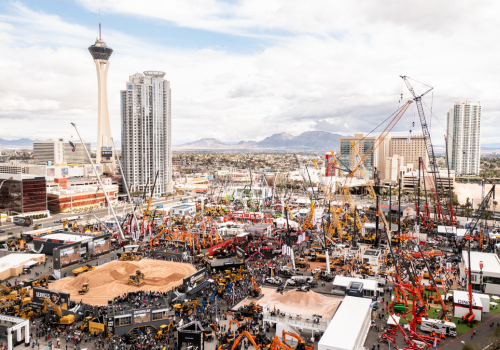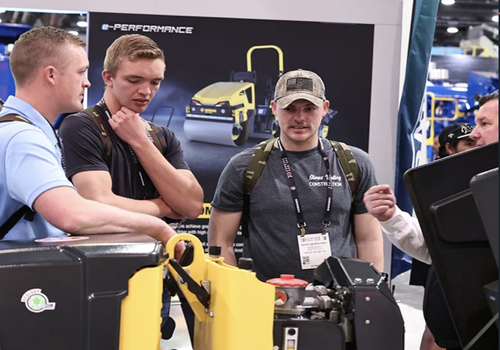If there’s one group of folks who know what it’s like to sweat through a shirt by 10 a.m., it’s construction workers. Working outside in the blazing sun, surrounded by hot machinery, concrete and steel? That’s no joke. And that’s exactly why Extreme Heat Awareness Month, observed each July, exists—to raise awareness about the dangers of working in high heat and make sure folks like you have the knowledge and tools to stay safe.
What Is Extreme Heat Awareness Month?
Extreme Heat Awareness Month is a nationwide campaign aimed at spotlighting the real dangers of working or spending time in high-heat environments. The goal is to reduce heat-related illnesses and deaths by spreading the word about heat safety and prevention strategies. For construction crews—who often work long hours outside—it’s especially relevant.
Heat isn’t just uncomfortable. It can be deadly. Every year, dozens of workers in the U.S. die from heat-related illnesses, and thousands more get sick. The good news? These tragedies are 100% preventable.
Why Construction Workers Are at Higher Risk
Let’s break it down. You’re lifting, hauling, hammering and operating heavy equipment all while baking under the sun. That means:
- You’re generating body heat on top of the environmental heat.
- Your PPE (personal protective equipment) adds extra insulation.
- You may not always have quick access to shade, AC or water.
This combination puts you at a higher risk for heat exhaustion, heat stroke, cramps, rashes and even long-term kidney issues from dehydration.
Know the Warning Signs
Heat-related illnesses can sneak up on you. Learn the symptoms so you can catch them—or help a buddy—before it’s too late:
Heat Exhaustion
- Dizziness, nausea or headache
- Heavy sweating
- Cool, moist skin with goosebumps
- Weak, rapid pulse
- Muscle cramps
Heat Stroke (This is a medical emergency!)
- Hot, dry skin or profuse sweating
- Confusion, slurred speech or unconsciousness
- High body temperature
- Rapid, strong pulse
If you spot symptoms of heat stroke in yourself or someone else, call 911 immediately and try to cool them down with shade, water or wet cloths.
6 Practical Tips for Staying Safe on the Jobsite
So what can you actually do to protect yourself and your team? Here are six solid, field-tested tips:
1. Hydrate Like You Mean It
Start your day with water, and drink small amounts every 15–20 minutes—even if you’re not thirsty. Avoid energy drinks and too much caffeine. Electrolyte drinks (like sports drinks or rehydration tablets) are great for long, hot days.
2. Ease Into the Heat
If you’re just getting back to work after time off or it's the season's first heat wave, pace yourself. It takes about a week or two for your body to fully adjust to working in the heat.
3. Dress Smart
Wear lightweight, light-colored and breathable clothing. Long sleeves and pants might seem counterintuitive, but they protect your skin from the sun. And always, always wear a hat and UV-blocking sunglasses.
4. Use Shade Like It’s Gold
Make the most of shade during breaks. If there’s no natural shade, use tarps, tents or even vehicles with AC. Resting in cooler areas gives your body a chance to recover.
5. Speak Up and Look Out for Each Other
Don’t be a hero—if you feel off, let your supervisor know. And check on your coworkers. A quick “You good?” could make a life-saving difference.
6. Know Your Rights
Under OSHA guidelines, employers must provide:
- Access to drinking water
- Rest breaks in the shade
- Training about heat-related illnesses
If you’re not getting these, it’s okay—and important—to speak up. Safety comes first, always.
July might be known for BBQs, fireworks and days at the beach—but for folks working under the sun, it’s also a time to get serious about safety. Extreme Heat Awareness Month is your reminder to take the heat seriously, protect yourself and support your crew.
Hydrate, rest, look out for each other and share this article with someone else who might need a reminder to keep cool. Then, check out: The Importance of Listening to Your Body During Physically Demanding Work, Keeping Construction Workers Safe in Hot Weather: Essential Strategies and Best Practices, Heat Safety on the Job and OSHA’s Latest Guidelines and How They Impact Construction Site Safety.
Extreme Heat Safety Checklist for Construction Workers
Are you prepared for extreme heat? Use this checklist as a guide and share with your coworkers!
Before the Shift Starts
- [ ] Hydrate before work (drink 16–20 oz of water 30 minutes prior to your shift)
- [ ] Check the weather forecast and plan for extreme heat
- [ ] Review the heat safety plan with your crew
- [ ] Make shade/rest areas accessible (tents, umbrellas, trailers with A/C)
- [ ] Stock up on water and electrolyte drinks
- [ ] Assign a heat safety buddy—pair up to monitor each other
What to Wear
- [ ] Lightweight, breathable, light-colored clothing
- [ ] Sun hat or hard hat with a brim
- [ ] UV-blocking sunglasses
- [ ] Sunscreen (SPF 30 or higher), reapplied every 2 hours
On the Job
- [ ] Drink water every 15–20 minutes, even if not thirsty
- [ ] Take rest breaks in the shade or cool areas
- [ ] Rotate strenuous tasks to avoid overexertion
- [ ] Watch for symptoms of heat exhaustion or heat stroke
- [ ] Use cool cloths, fans or misting stations when possible
- [ ] Remind your crew: Don’t push through the heat—speak up if you feel off
Symptoms to Watch For
- [ ] Dizziness, nausea, fatigue
- [ ] Muscle cramps or excessive sweating
- [ ] Confusion, slurred speech or red, hot skin
- [ ] Fast pulse or shallow breathing
If any of these symptoms are present: Stop work immediately. Seek medical help. Cool the person down and call 911 if needed.
End of Shift
- [ ] Rehydrate and cool down gradually
- [ ] Check in with your team—how’s everyone feeling?
- [ ] Note any incidents or near-misses related to heat
- [ ] Prep tomorrow’s supplies (ice, water, shade gear)
Photo credit: SHUTTERSTOCK.COM/QUALITY STOCK ARTS












